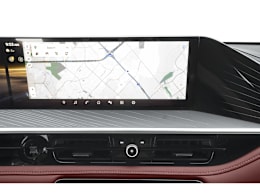Introduction
Elegant 2025 Infiniti QX80 Is Brimming With Power, Luxury, and Safety Features
Clever touches and innovative tech elevate this full-sized SUV into prestige territoryOverview
The 2025 Infiniti QX80 joins the six-figure club in its highest trims, as the redesigned full-sized SUV piles on power, luxury, and safety features. The automaker says this is the first model in its new product renaissance, giving importance to the styling and equipment as previews of things to come in other body styles.
It is clear at a glance that this QX80 is more modern and upscale than the long-running SUV it replaces, which was launched for the 2011 model year with the QX56 name. The redesigned QX80’s premium features and aesthetics promise to move it even further away from its corporate sibling, the Nissan Armada, and align it well with the finest, full-sized competitors, such as the Cadillac Escalade, Lexus LX, and Land Rover Range Rover. As before, this is a body-on-frame design but with fully independent suspension.
Marking the new era is a move away from the stalwart V8 to a twin-turbocharged V6 that brings 50 more horsepower and the promise of improved fuel economy.
Tech such as the available wide-view front camera, large screens, Klipsch premium audio, second-row massaging seats, and the latest ProPilot Assist 2.1 active driving assistance system give the QX80 prestigious features to attract well-heeled buyers.
Prices start at $82,450 for the Pure trim in rear-wheel drive, climb to Luxe 4WD ($92,650), then step up into six figures: Sensory 4WD ($100,645) and Autograph 4WD ($110,595). That marks a significant increase over the outgoing 2024 QX80, whose price range spans $74,150 to $88,450. The destination charge remains among the very highest in the land at $1,995.
We spent two weeks with a QX80 Autograph, rented from Infiniti, and our testers have some key observations to share. We currently do not plan to purchase one to test, but we will buy a redesigned Nissan Armada.























